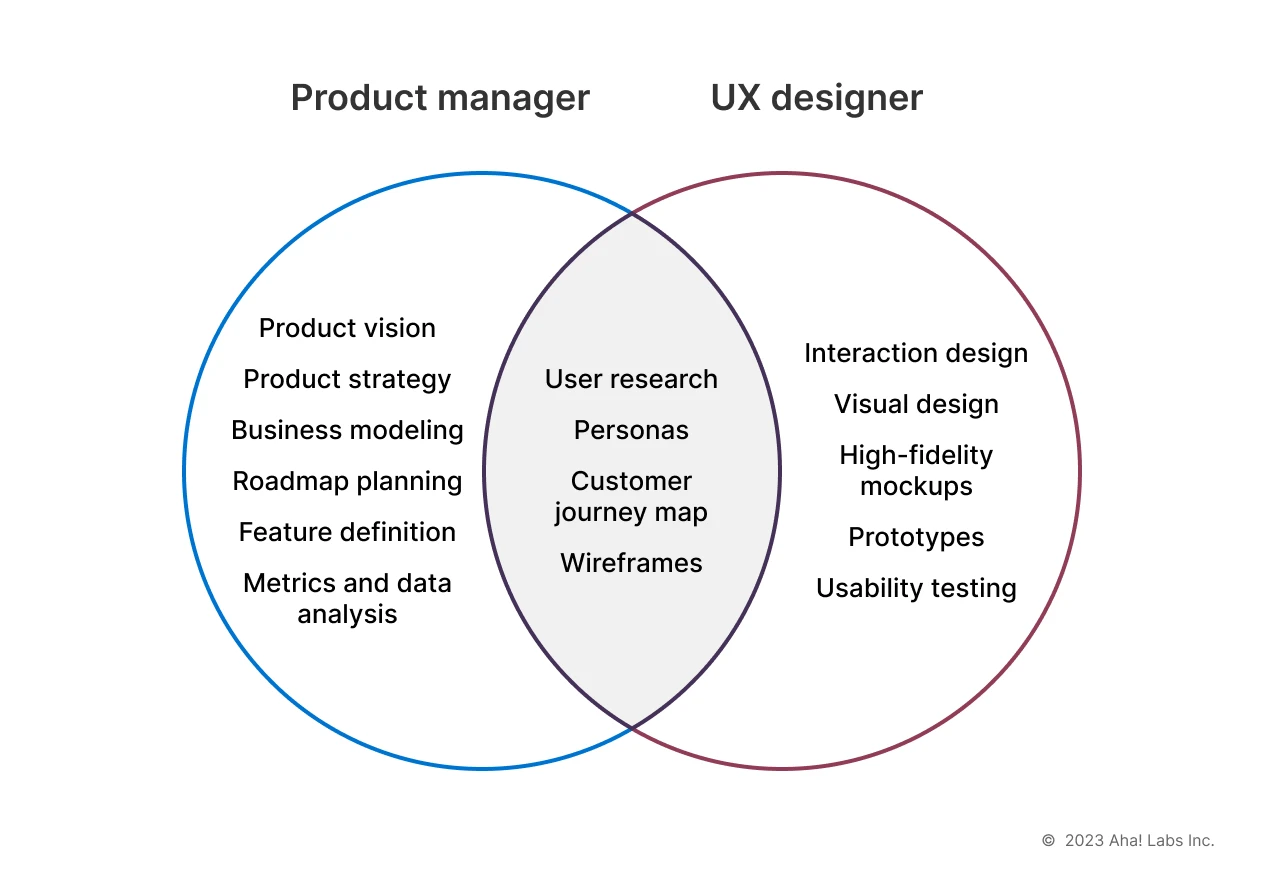
Product manager vs. UX designer: Who should be in charge?
Last updated: October 2024
Who “owns” a product? There are a lot of people who contribute — from casting a bold vision for something new to building repeatable processes that support customers using it. At every stage of the product development process there are individuals who “own” some aspect of what becomes the Complete Product Experience (CPE). The details do matter.
A truly lovable product brings value to customers with how it solves the problem and how enjoyable it is to use.
Product management and product design are integral to getting that balance right. These are different roles with different duties — yet there can be muddiness and tension where the two overlap. Recently I posted on LinkedIn asking about what folks felt product managers and user experience (UX) designers should each be wholly responsible for and why. Interestingly, few were willing to assign ownership over specific tasks. With words like “fluid” or “tandem” in the mix, the consensus seemed to be that everyone is responsible for “the user.”
Of course this is true. Everyone on the product team is responsible for understanding customers and delivering value to them. Each team must make uniquely tough decisions about what is best for the product, the customer, and the business.
Who is in charge? Let’s start to unravel the main differences between product managers and UX designers:
What are a product manager’s responsibilities?
Product managers are responsible for realizing the product vision — business modeling, setting strategy, roadmapping, feature prioritization, go-to-market release, customer adoption, and ongoing performance of a product. You lead a cross-functional team and influence stakeholders. Your focus is the overall business success of the product, making choices that are best for the customer and for the company.
What are a UX designer’s responsibilities?
UX designers are responsible for the functional expression of the product vision — design decisions that impact the experience of using a product. You are a member of the cross-functional team that supports the delivery of a successful product. Your focus is on helping customers efficiently achieve their objective when using the product, making choices that are best for the user.
Where do responsibilities for product managers and UX designers overlap?
As you can see in the graphic above, both roles are deeply invested in customers. That includes sharing that perspective with cross-functional teammates and ensuring that user feedback is integrated into the product. Everyone should feel a sense of personal responsibility for understanding the people who use your product.
Identifying user needs, defining use cases, creating low-fi mockups, mapping out flows, and validating feature decisions — these are areas where the murkiness deepens and the tension emerges. Who makes personas? Who owns research?
From my experience, you can curb these issues when you are working in an organization with clear strategy, consistent workflows, and no tolerance for big egos. You can assign areas of responsibility and retain flexibility for the unexpected. Trust and respect make the team.
Get product management tips in your inbox — sign up now.
So who is in charge — PM or UX?
Not everyone can be in charge. Someone has to ultimately be responsible for the success of the product. And if you have read this far then you already know the answer.
Product managers grapple with tradeoffs that UX designers do not. Even the way that a product manager will interpret data is different from a UX designer. You may see signals that others do not because of the breadth of your focus. Time to market, technical limitations, resources, and cost are real factors. A design recommendation may be a clear improvement, but product managers must decide if it is worth the investment to build.
You need a great partnership between product management and UX. Otherwise the product, the business, and your customers will suffer.
Product development is truly a team sport. Good product managers and good UX designers make for happier customers who love what you build. When everyone owns their part in that process and takes responsibility for making the collective effort a success you have a better chance of reaching your goals.
Give your product development team a single source of truth with Aha! Roadmaps.
Related:





